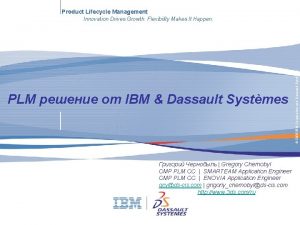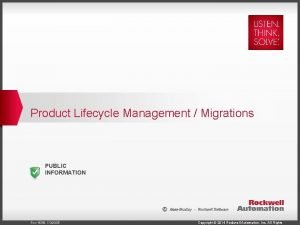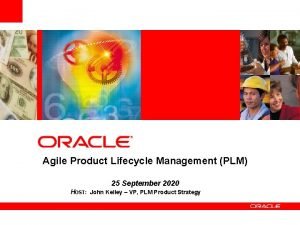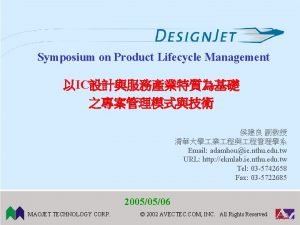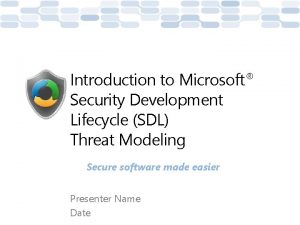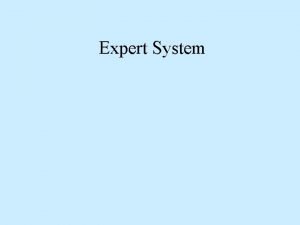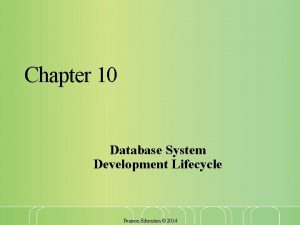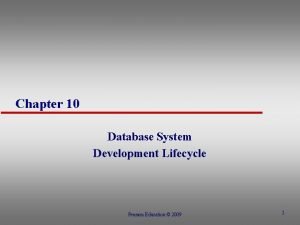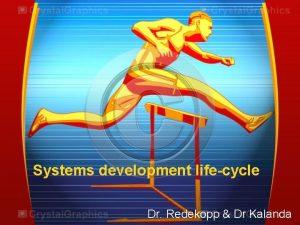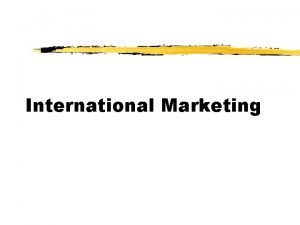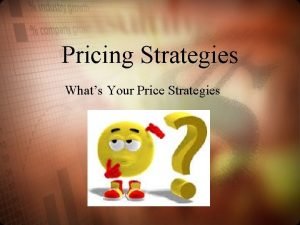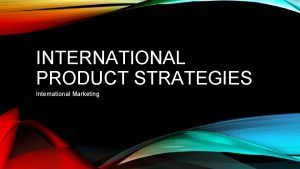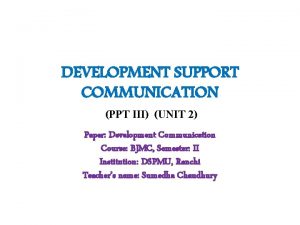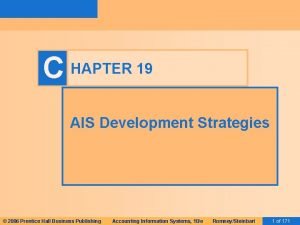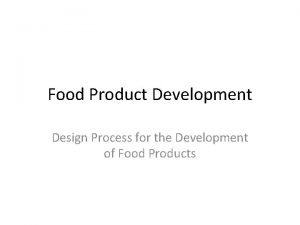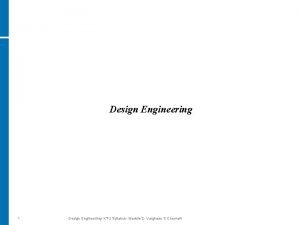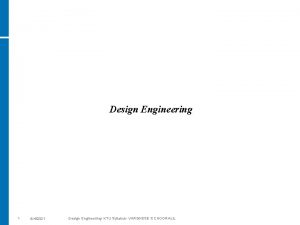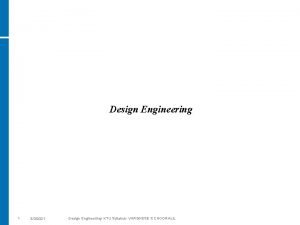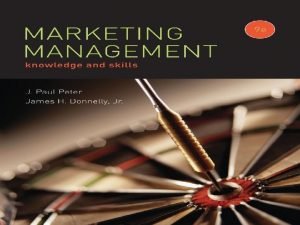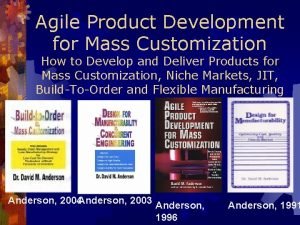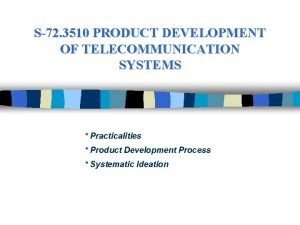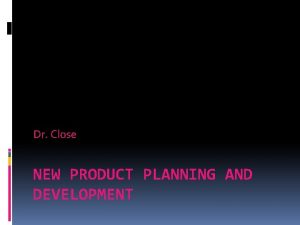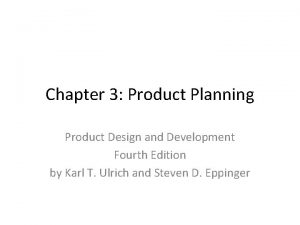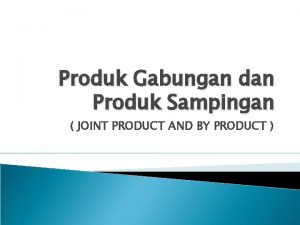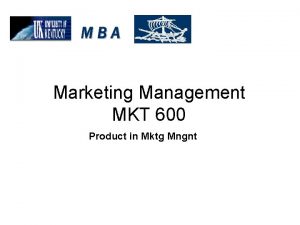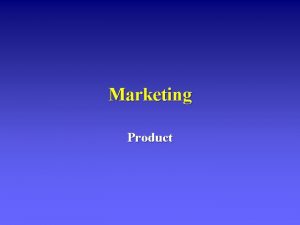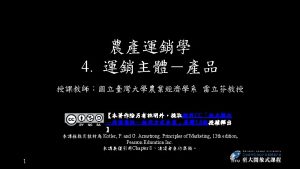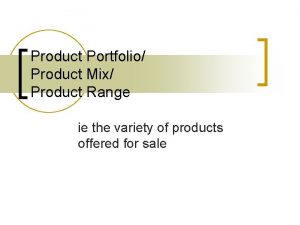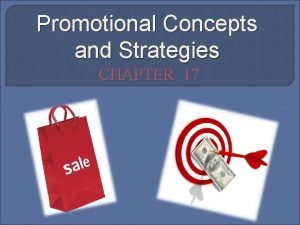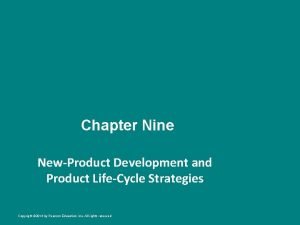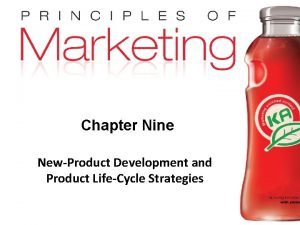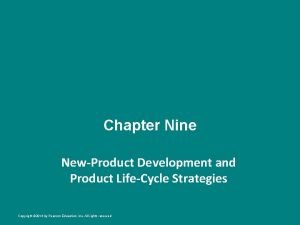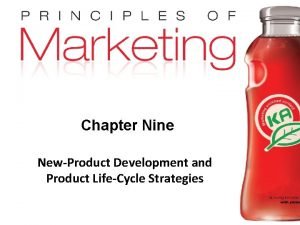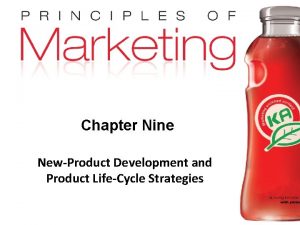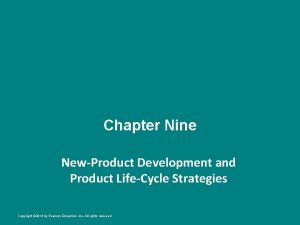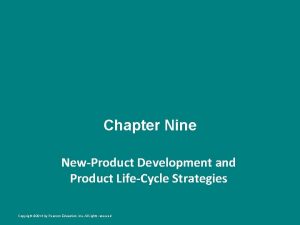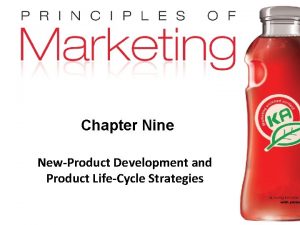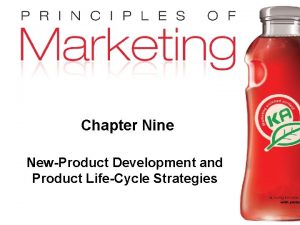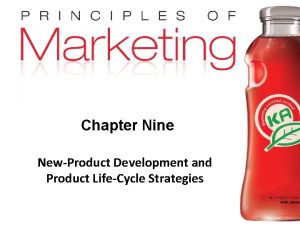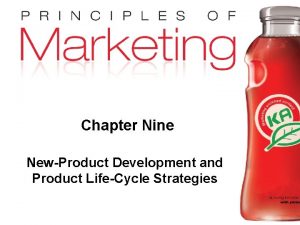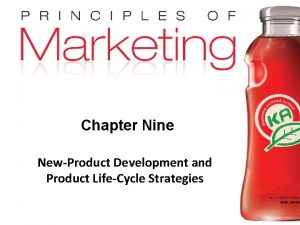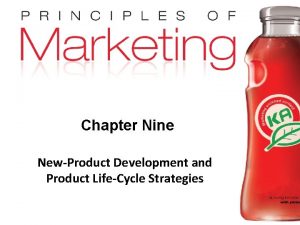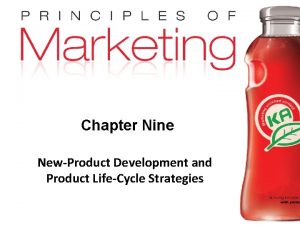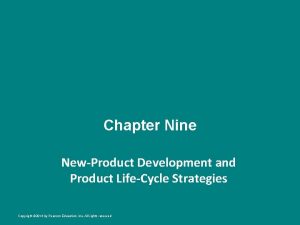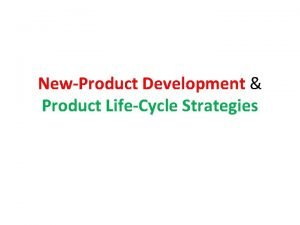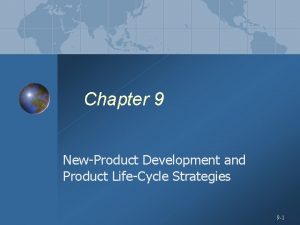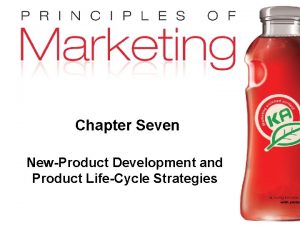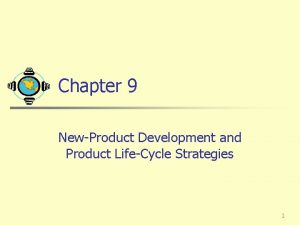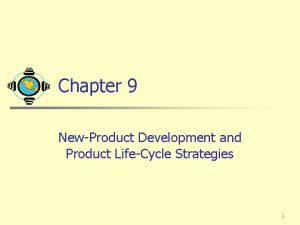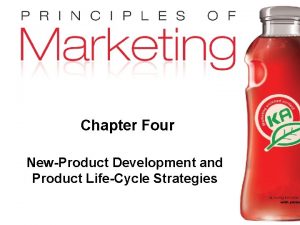Chapter Nine NewProduct Development and Product LifeCycle Strategies











































- Slides: 43

Chapter Nine New-Product Development and Product Life-Cycle Strategies Copyright © 2009 Pearson Education, Inc. Publishing as Prentice Hall Chapter 9 - slide

New-Product Development and Product Life-Cycle Strategies Topic Outline • • Strategy New-Product Development Process Managing New-Product Development Product Life-Cycle Strategies Additional Product and Service Considerations 9 -2 • New-Product Development

New-Product Development Strategy Two ways to obtain new products: company, a patent, or a license to produce someone else’s product • New product development refers to original products, product improvements, product modifications, and new brands developed from the firm’s own research and development • New products suffer from very high failure rates 9 -3 • Acquisition refers to the buying of a whole

New-Product Development Strategy • New products are a key source of growth for • According to one estimate, 90 percent of all new products fail • Each year, companies lose an estimated $20 billion to $30 billion on failed food products alone • You need a strong new-product planning process to improve your chances of success 9 -4 companies yet innovation can be very expensive and risky

New-Product Development Reasons for New Product Failure • Product is incorrectly positioned in the market • Product is priced too high • Ineffective promotion • A high-level executive might push a favorite idea despite poor marketing research findings 9 -5 • The market size may have been overestimated

• Poor design • Costs of product development are higher than expected • Competitors fight back harder than expected • Wrong timing 9 -6 New-Product Development Reasons for New Product Failure

New-Product Development Process 9 -7 8 Major Stages in New-Product Development

New-Product Development Process Stage 1: Idea Generation new product ideas • Internal sources v R & D (Research & Development v Intrapreneurial programs • External sources v Customers, competitors, distributors, suppliers 9 -8 • Systematic search for

9 -9 3 M’s corporate culture encourages, supports, and rewards new product ideas and innovation

New-Product Development Process • Product development costs increase dramatically in later stages so poor ideas must be dropped as soon as possible. • R-W-W Screening Framework: v Is it Real? v Can we Win? v Is it Worth doing? 9 - 10 Stage 2: Idea Screening

New-Product Development Process • Product idea is an idea for a possible product that the company can see itself offering to the market • Product concept is a detailed version of the idea stated in meaningful consumer terms • Product image is the way consumers perceive an actual or potential product 9 - 11 Stage 3: Concept Development and Testing

New-Product Development Process Stage 3: Concept Development and Testing product concepts with groups of target consumers 9 - 12 • Concept Testing refers to the testing of new-

New-Product Development Process Stage 4: Marketing Strategy Development the initial marketing strategy for introducing the product to the market • Marketing strategy statement includes: v Description of the target market v Value proposition v Sales and profit goals v Marketing mix strategy 9 - 13 • Marketing Strategy Development refers to

New-Product Development Process • Business Analysis involves a review of the sales, costs, and profit projections to find out whether they satisfy the company’s objectives 9 - 14 Stage 5: Business Analysis

New-Product Development Process Stage 6: Product Development testing of one or more physical versions (prototypes) by the R&D or engineering departments v Requires an increase in investment 9 - 15 • Product Development involves the creation and

New-Product Development Process Stage 7: Test Marketing at which the product and marketing program are introduced into more realistic marketing settings • Provides the marketer with experience in testing the product and entire marketing program before full introduction 9 - 16 • Test Marketing is the stage

New-Product Development Process When firms test market • New product requires large investment • Uncertainty about product or marketing program When firms may not test market • Simple line extension • Copy of competitor product • Low costs • Management confidence 9 - 17 Test Marketing

New-Product Development Process Types of Test Markets Controlled test markets Simulated test markets 9 - 18 Standard test markets

Standard Test Markets in a small number of representative test markets (or cities) • Company evaluates product performance using store audits, consumer and distributor surveys, and other measures • Results are used to forecast national sales and profits, discover product problems, and finetune the marketing program 9 - 19 • Company conducts a full marketing campaign

Standard Test Markets v Cost v Time v Competitors can monitor the test v Competitor interference v Competitors gain access to the new product before introduction 9 - 20 • Challenges of standard test markets:

Review Standard Test Markets in a small number of representative test markets (or cities) • Results are used to forecast national sales and profits, discover product problems, and fine-tune the marketing program 9 - 21 • Company conducts a full marketing campaign

Controlled Test Markets have agreed to carry a new product for a fee. Individual consumer behavior for the new product is tracked v Less expensive than standard test markets v Faster than standard test markets v However, competitors still gain access to the new product 9 - 22 • Test in a controlled panel of stores that

Simulated Test Markets shopping environment - Show ads and promotions for a variety of products, including the new product being tested, to a sample of consumers • Give consumers a small amount of money and invite them to a store where they may keep the money or use it to buy the new or any other product items v Provides a measure of trial and the effectiveness of promotion 9 - 23 • Approach where a firm will create a simulated

Simulated Test Markets v Less expensive than other test methods v Faster v Restricts access by competitors • Disadvantages v Not considered as reliable and accurate due to the controlled setting 9 - 24 • Advantages of simulated test markets

New-Product Development Process • Commercialization is the introduction of the new product to the market v When to launch v Where to launch v Planned market rollout 9 - 25 Stage 8: Commercialization

Managing New-Product Development Strategies should be: v Customer-centered v Team-centered v Systematic 9 - 26 • Successful new product development

Managing New-Product Development Strategies new product development focuses on finding new ways to solve customer problems and create more customer satisfying experiences 9 - 27 • Customer-centered

Managing New-Product Development • Sequential new-product development is an approach where company departments work individually to complete each stage of the process before passing it along to the next department or stage v Positive: Increased control in risky or complex projects v Negative: Slow 9 - 28 New-Product Development Strategies

Managing New-Product Development Strategies approach where company departments work closely together in cross-functional teams, overlapping in the product-development process to save time and increase effectiveness • Team-based vs. Sequential: v Team-based can increase tension and confusion v Team-based is faster and more flexible 9 - 29 • Team-based new-product development is an

Managing New-Product Development Strategies development is an innovative development approach that collects, reviews, evaluates, and manages new-product ideas v Creates an innovationoriented culture v Yields a large number of new-product ideas 9 - 30 • Systematic new-product

Product Life-Cycle Strategies product’s sales and profits take over its lifetime • Typical PLC Has Five Stages v Product Development v Introduction v Growth v Maturity v Decline 9 - 31 • Product life cycle (PLC) is the course that a

Product Life-Cycle Strategies 9 - 32 Product Life Cycle

Product Life-Cycle Strategies • • v Sales are zero and investment costs mount Introduction v Slow sales growth and profits are nonexistent Growth v Rapid market acceptance and increasing profits Maturity v Slowdown in sales growth and profits level off or decline Decline v Sales fall off and profits drop 9 - 33 • Product development

9 - 34 Product Life-Cycle Strategies Not all products follow the typical PLC: § Style: Basic and distinctive mode of expression § Fashion: Currently accepted or popular style § Fad: A fashion that enters quickly, is adopted with enthusiasm & declines quickly

9 - 35 Fads are temporary periods of unusually high sales driven by consumer enthusiasm and immediate product popularity

Product Life-Cycle Strategies • Slow sales growth • Little or no profit • Little competition • Innovators are targeted • Marketing Mix Implications: v Basic product is offered v High distribution and promotion expense v Selective distribution 9 - 36 Introduction Stage

9 - 37 At the time of this ad, this product was at the introduction stage

Product Life-Cycle Strategies • Sales increase rapidly • Profits increase • New competitors enter the market • Promotion and manufacturing costs gain economies of scale • Marketing Mix Implications: v Offer product extensions v Penetration pricing v Intensive distribution 9 - 38 Growth Stage

Product Life-Cycle Strategies • Sales peak and slow down • High but declining profits • Middle majority is targeted • Overcapacity, competition declines • Marketing Mix Implications: v Increased promotion and R&D to support sales and profits v Stress brand differences v Use product or market modifying strategies 9 - 39 Maturity Stage

Product Life-Cycle Strategies 3 Maturity Stage Modifying Strategies • Market modifying: Increase the consumption of the v Look for new users and new market segments v Increase usage among present customers • Product modifying: Changing product characteristics to attract new users and to inspire more usage v Quality, features, style, or packaging v Improve the product’s quality and performance v Improve the product’s styling and attractiveness • Marketing mix modifying: Changing mix elements 9 - 40 current product

Product Life-Cycle Strategies • Declining sales & profits • Declining competition • Must decide: v Maintain the product v Harvest the product v Drop the product • Marketing Mix Implications: v Phase out weak items v Selective Distribution v Reduce advertising & sales promotion 9 - 41 Decline Stage

Additional Product and Service Considerations Public policy and regulations regarding developing and dropping products, patents, quality, and safety 9 - 42 Product Decisions and Social Responsibility

Additional Product and Service Considerations • Determining what products and services to introduce in which countries • Standardization versus customization • Packaging and labeling • Customs, values, laws 9 - 43 International Product and Service Marketing—Challenges
 New product development and product life cycle strategies
New product development and product life cycle strategies Marzanos instructional strategies
Marzanos instructional strategies Ibm plm
Ibm plm Rockwell product lifecycle
Rockwell product lifecycle Oracle innovation management cloud
Oracle innovation management cloud Product lifecycle management agile
Product lifecycle management agile Product lifecycle
Product lifecycle Microsoft security development lifecycle
Microsoft security development lifecycle Expert system life cycle
Expert system life cycle Dbms life cycle
Dbms life cycle Pearson
Pearson Game development lifecycle
Game development lifecycle Domestic market extension orientation example
Domestic market extension orientation example Multi unit pricing
Multi unit pricing Global product strategies
Global product strategies Central idea of the production
Central idea of the production Product line and product mix
Product line and product mix Industry/target market feasibility analysis example
Industry/target market feasibility analysis example Gdp vs gnp
Gdp vs gnp An image-development strategy; a preliminary drawing.
An image-development strategy; a preliminary drawing. Development support communication
Development support communication Ais development strategies
Ais development strategies Ais development strategies
Ais development strategies Design specification
Design specification Design engineering syllabus ktu
Design engineering syllabus ktu Defenition of design
Defenition of design Ktu design and engineering syllabus
Ktu design and engineering syllabus Product planning and development strategy
Product planning and development strategy Product planning and development
Product planning and development Agile product development for mass customization
Agile product development for mass customization Telecoms technology and product development
Telecoms technology and product development Product planning and development
Product planning and development Marketplaceù
Marketplaceù Product design and development plan
Product design and development plan Produk gabungan adalah
Produk gabungan adalah Core augmented and actual product
Core augmented and actual product Dot product vs cross product
Dot product vs cross product Product mix vs product line
Product mix vs product line Contoh soal dot product dan cross product
Contoh soal dot product dan cross product Core customer value
Core customer value Product portfolio mix
Product portfolio mix Perkalian silang
Perkalian silang Chapter 17 promotional concepts and strategies
Chapter 17 promotional concepts and strategies The marketing plan the central instrument
The marketing plan the central instrument


